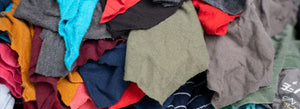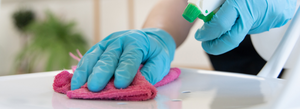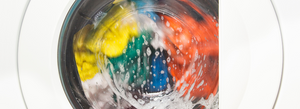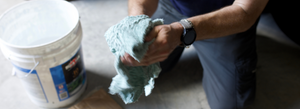News

Exploring the Magic of Microfiber
Whether you’re an auto detailer restoring a shine, a jewelry shop owner cleaning a display case, or a housekeeper dusting keepsakes, microfiber cloth has revolutionized cleaning over the past few decades.
For people who remember cleaning with other types of cloth, microfiber’s performance can seem almost magical.
This month we’re taking a closer look at this finely woven fabric to explore how microfiber works, why it works so well, and whether it’s worth the extra cost for your business.
What is Microfiber and Why Does it Work So Well?
Microfiber attracts dirt and grime, including microscopic bacteria, and holds onto it — all without using chemicals or, in many cases, water. These cleaning cloths use what seems like magnetic energy to draw dirt, grime, and bacteria out of tiny crevices.
Microfiber: A Brief History
Microfiber dates to the 1950s when domestic textile producers started launching research and development initiatives to explore alternatives to cotton and wool. Textile makers were looking for new products to sell in the booming postwar markets.
These initiatives led to several products we’re now familiar with, like polyester and nylon.
The industrial technology of that era was also changing. Textile makers could weave cloth with more precision, allowing for higher thread counts and the inclusion of finer fabrics.
How Micro is Microfiber?
Microfiber combines synthetic material with industrial precision. To create microfibers, cloth makers heat synthetic fibers and force them through miniscule pipes. This process splits each fiber into smaller fibers.
These smallest fibers are measured in microns. A micron is one millionth of a meter. About 20,500 microns lined up in a row would equal the length of one inch. Typical human eyesight can’t see a particle that’s smaller than 50 microns.
Originally, microfibers were 3 to 5 microns wide. Today’s fibers are even smaller, sometimes only a third of a micron.
Small Fibers = Big Results
It’s the miniscule nature of the fibers in a cloth that create the magic. One square inch of a microfiber cloth includes about 20,000 individual fibers. That means a typical 12 inch by 12 inch rag includes more than 2.8 million fibers.
Working together, these fibers create a natural force, known as the Van der Waals force, that makes the rags so magnetic. It’s similar to the force that allows insects to crawl up walls and along ceilings.
You can feel this force when you run microfabric along your forearm.
Does My Business Need Microfiber Cleaning Cloths?
When used and maintained properly, microfiber performs better than traditional cloth. This difference between microfiber and traditional cloth can be called dramatic. This is a fact.
But this doesn’t mean every business should stop buying terry cloth or recycled rags and start buying only microfiber. Not every business needs this level of cleaning performance, just like not every daily commute requires a Mustang 5.0. For most drivers, a Toyota Corolla will do just fine.
So, a mechanic who needs rags to soak up oil, for example, or a sous chef who needs to contain a food spill, cares very little about their rag’s denier count. Likewise, a professional cleaner who depends on bleaches and chemical-based detergents to disinfect surfaces may also prefer a stack of cotton cloths.
Other Cleaners Insist on Microfiber
But microfiber is a must-have for cleaners who care about precision and efficiency — cleaners who need their rags to overperform. Often, these are cleaners whose success depends on the rag itself.
The aforementioned jewelry store owner, for example, needs the store’s display cases to seem invisible so shoppers can focus on the jewelry inside the case. This store owner needs a stack of microfiber cloths to use between customers. A quick application of the rag alone can remove fingerprints or debris, restoring the glass’s shine.
Our Customer Service Also Shines
If we were to choose one phrase to describe microfiber’s unparalleled performance it would be “attention to detail.” This phrase describes microfiber’s construction as well as its performance.
This phrase also describes the customer service staff at All Rags.
Every day our staff helps new and existing customers find the right cleaning rags for their needs, whether they need microfiber, huck towels, disposable paper wipers, or something else.
Contact us today to talk about your company’s needs.
- Brad Grossman
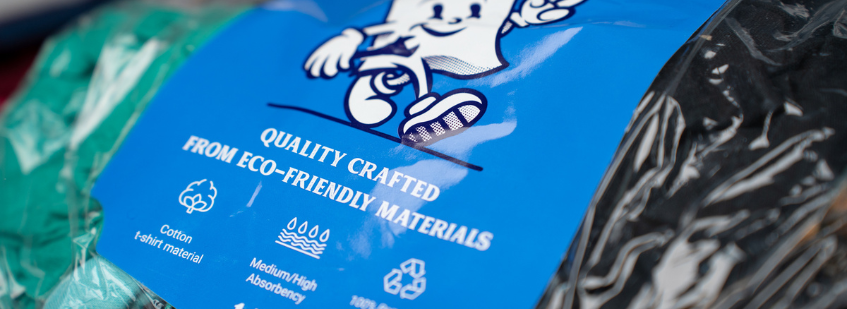
Can We Really Recycle Old Clothes Into Rags?
We like recycled rags. We encourage many of our clients to buy them because they save money, help the environment, and create local jobs.
But we also hear from skeptics who don’t believe we can really recycle old clothes and towels into rags.
We get it. We’ve also seen the news stories over the past few years claiming plastic companies only pretended to recycle bottles. They pretended because they knew customers felt better about buying a product they could recycle.
It’s also true that not all textile recycling is simple, and not all recycling methods help the environment in the same way. But we think our type of textile recycling holds up pretty well.
First, Addressing the Skepticism About Recycling
The word recycling means different things to different people. The most effective type of recycling is “closed-loop recycling.”
Closed-loop recycling happens when you refill a plastic water bottle. Each time you fill the bottle, you’re using the same material for the same purpose again, preventing the need for someone to make a new bottle — while also keeping your bottle out of the landfill or recycling facility.
There’s also open-loop recycling. This is when you toss the water bottle into the curbside recycling bin. It goes, presumably, to a facility where the material is isolated and then sold to another company that turns the plastic into shoe soles or mattress filling or some other consumer product.
With open-loop recycling, somebody still has to make your next water bottle, using natural resources to make and ship the bottle to the store. There’s still some benefit to this method. After all, the water bottle isn’t buried in the ground or tossed into the ocean. But energy and natural resources are still being spent.
Closed-loop recycling is the ultimate goal of most people who work to preserve the environment and its resources. Our rag recycling process comes close to meeting this closed-loop goal.
Some Textile Recycling Is Complex and Messy
Textile recyclers use different processes, too. Some recyclers use chemicals to break existing cloth materials into fibers which can be used to weave new fabric. This method typically produces a lower quality cloth, but it can create rolls of recycled cloth which can be cut and sewn, on an industrial level, just like new cloth.
Other recyclers use a mechanical process to reduce clothes or towels down to their base material which can then be cut and sewn into new patterns for new products. This method starts with a stronger, higher quality base material, but in more limited sizes and quantities, and without the uniformity that comes from a full roll of new cloth.
Recycled Rags Can Combine the Best of Both Worlds
Recycling cleaning rags are the perfect product to use recycled textiles. Rags don’t have to be uniform in size and color. If one rag is polka dotted and the next rag is plaid, that’s typically OK with the customers who buy these rags.
Because uniformity doesn’t matter as much, recycled rags can use the simpler, mechanical process of breaking towels, sweatshirts, T-shirts, and blankets into their source material.
It’s not much different than cutting up an old pair of jeans and using the material to clean the pollen off the windows. We just do this on a larger scale.
What matters is not how the resulting rags look but how they perform, and most recycled rags perform really well. They’re made from material that’s already broken in and ready to absorb.
The Global Benefit of Using Recycled Cloth Rags
When our industry takes in bins of used towels, bathrobes, and T-shirts, we’re keeping those materials out of landfills. This is an obvious pro for the local environment. But that’s not the extent of the benefits.
When customers buy recycled rags, they’re reducing the demand on new textiles, and this has a global impact on our climate.
New textiles require the agricultural process of growing cotton and the industrial process of spinning fibers into cloth and then cutting and sewing the source cloth into rags. Then there’s all the fuel used to move source material around the world.
Buying less new textile material — by choosing recycled cleaning rags — helps the environment in multiple ways.
Recycled Rags Are Not For Everybody
Recycled rags can’t serve every cleaner’s needs. These rags will always vary, at least a little, in size and color. This means they don’t fold and stack as neatly on the shelf or cleaning cart as new rags. This matters more in industries such as health care and hospitality.
Recycled rags also tend to look more frayed and worn, even when they’re performing at their best. Any place where clients judge a business by its appearances should buy new rags instead.
And there are a couple performance issues to know about: Recycled rags won’t deliver lint free wiping electronics and high end furniture makers usually need.
But for cleaners in other industries who want performance for less money, buying recycled is an excellent choice.
With Any Product, Expect the Best Customer Care
Whether you’re buying recycled rags, rags made from new textiles, or disposable paper wipes, All Rags is here to help. We stock the best products and ship them quickly from our network of warehouses around the nation.
And our U.S.-based customer service experts know about cleaning supplies. If you’re not sure what product to buy, our staff can discuss your specific needs and help you decide.
We often run discounts on bulk orders, so you can save even more by stocking up. Contact us today to place your order.
- Brad Grossman
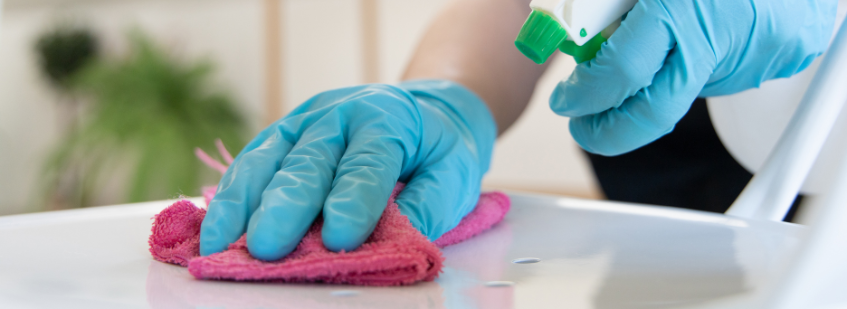
Best Cleaning Rags for Schools and School Districts
Students spill drinks. They get upset stomachs. Sometimes they sneeze on surfaces.
This means teachers get a crash course in battling germs and messes, especially during flu and cold season.
Most schools employ professional cleaners, but not every teacher can wait for the end-of-day standard room cleaning. To slow the spread of germs, they often need their own supplies to clean with throughout the day.
- Brad Grossman

Can You Get Mold Out of Cleaning Rags?
Mold is a stubborn adversary, so many cleaners — when they see or smell this substance on their wipers — will throw in the towel. That is, they literally throw the towel or rag into the trash bin and order a new box of rags.
With the right cleaning methods, most moldy rags can be restored to an extended life of service. This month’s post will cover the best practices for cleaning moldy rags.
- Brad Grossman
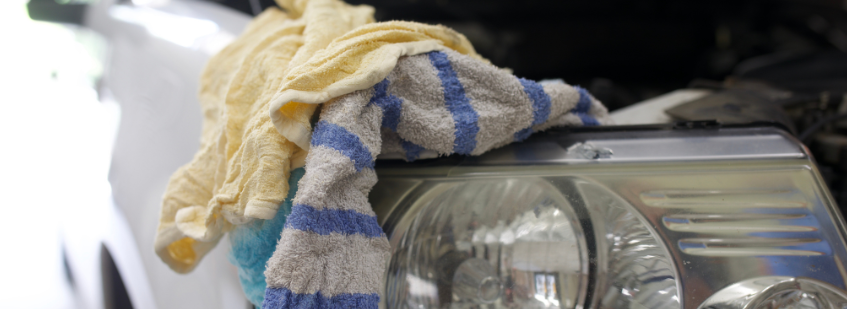
What Cleaning Rags Work Best in an Auto Repair Shop?
Auto garages face several choices when they shop for cleaning rags. Each category has its pros and cons, and a garage’s choice often boils down to what the owner or lead mechanics prefer.
As cleaning the rag providers for a variety of auto garages, we’ve noticed some trends that we’d like to share.
- Brad Grossman
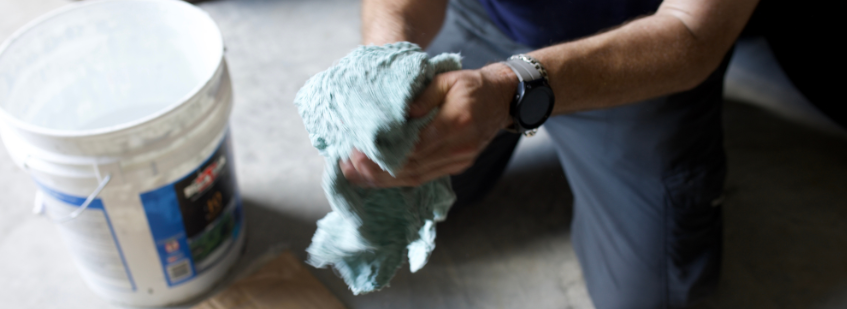
When is it Time to Toss Out Cleaning Rags?
We’ve already written about which cleaning rags to buy for just about any cleaning project. We’ve written about how to wash cleaning rags to help them last longer. We’ve even written about how to save money buying rags in bulk — and how to save even more money with recycled rags.
But, we’ve never written about throwing rags away.
- Brad Grossman
